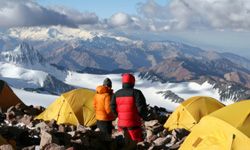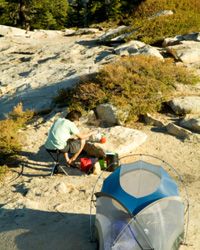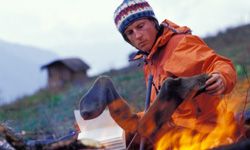Close your eyes and picture yourself at the top of the world. You're standing under endless, cloudless skies with the snow-capped immensity of creation spreading out below you. The wind gently riffles your hair. Now imagine the sound of a needle dragging across vinyl as imagination meets reality. It is freezing up here! You can barely stand against the onslaught of wind. Dirt and ice sting your eyes, your breath burns in your lungs, and your skin blisters with cold and sun. In the opening scene of the 1998 IMAX movie "Everest," the camera pans across unearthly, snow-swept vistas as the narrator intones, "The top of the world where the wind is fiercest is a deathly, desolate place ... " [source: IMDB].
Thankfully, most high altitude camping bears little resemblance to the summit of Mount Everest. From skiing and climbing opportunities to a birds' eye view, alpine enthusiasts agree that the rewards of camping at altitude outweigh the risks.
Advertisement
For those of you who are determined to take camping to a whole new level, we offer 10 tips for making your high-altitude experience safer and more enjoyable.





